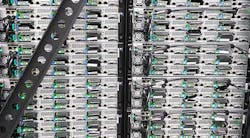Bare-Metal Servers Gain Momentum in the Data Center Market
Last week we launched a special report series on how bare-metal computing is changing the cloud landscape. This week, we’ll take a look common use cases for bare-metal servers and why bare-metal cloud computing is gaining momentum.
Why would I use bare-metal computing?
Get the full report.
There are several common scenarios for bare-metal computing.
- Database-intensive processes such as OLTP, securities trading, and credit card fraud detection require sub-second response times. The unpredictability of multi-tenant cloud environments can cause unacceptable delays.
- High-performance computing tasks such as AI model training and computer-aided design are tasks best performed with hardware that incorporates such performance-boosting features as high-speed interconnects, specialized memory and storage, and multiple graphics processing units.
- Businesses in regulated industries may have to meet data locality requirements that restrict where data is kept and processed. Because many cloud providers shift and copy data between regions, a public cloud may not provide sufficient protection. A bare-metal server guarantees that data is physically kept in one location at all times.
- For businesses that require high levels of security, hardware-based assists provide an extra layer of protection that is not available in virtualized environments.
A combination of these factors influenced the Translational Genomics Research Institute’s decision to make bare-metal cloud the core of its computing platform.
The non-profit TGen processes a vast amount of data as it conducts genetic research into developing early diagnostics for a variety of diseases. Much of the data is sensitive and confidential, a concern that was heightened by the organization’s expansion into Europe and the accompanying need to comply with the General Data Protection Regulation.
TGen uses the Bare Metal Cloud from phoenixNAP to rapidly provision physical servers on a global scale while meeting safety and compliance requirements. Deployed in minutes, Bare Metal Cloud servers provide the hardware and security infrastructure necessary for the confidential processing of large volumes of data.
Deployed in phoenixNAP data centers in both Arizona and Amsterdam, the Bare Metal Cloud “gave us a European presence with the level of security needed to ensure GDPR compliance,” said Glen Otero, vice president of scientific computing at TGen. The combination of the next-generation Intel CPUs and the encryption management platform “further our ability to deploy and manage security tools we need, all while maintaining exceptional levels of performance.”
Why is bare-metal computing gaining momentum?
In the 15 years since public cloud services first appeared, organizations have become far savvier about choosing their options. Many leverage a combination of on-premises, cloud, co-location, and bare-metal services that are tightly tailored to their workloads. A Flexera survey found that 92 percent of enterprises use multiple clouds with an average of 2.6 public and 2.7 private clouds each.
One of the great appeals of cloud platforms is their rapid provisioning capabilities — servers can be spun up in minutes compared to weeks or months for on-premises physical infrastructure. However, the need for dedicated servers hasn’t gone away. With the emergence of bare-metal computing in the cloud, organizations now have an attractive alternative to on-premises computing that has all the benefits of cloud provisioning and management.
The rise of the encapsulated software environments called containers and the Kubernetes container orchestrator has given customers even more options about how to deploy software. Kubernetes was ported to bare-metal infrastructure in 2018 and has been shown to run up to 30% faster on bare-metal clusters than on virtualized hypervisors, giving customers the dual benefits of workload portability and high performance.
The hyperconverged infrastructure (HCI) market, which Allied Market Research expects to grow more than 30% annually through 2026, has also contributed to bare-metal’s popularity. HCI’s attractive benefits in workload deployment, ease of management, and scalability are possible only using the bare-metal infrastructure. Organizations can use a combination of on-premises HCI and HCI on bear-metal in the cloud and control the entire environment from a single administration point.
Finally, edge computing is one of the fastest-growing IT markets, with Grand View Research forecasting 37% annual growth through 2027. Edge servers typically require high performance for applications like stream processing, content delivery, and traffic orchestration. In such a performance-sensitive real-time environment bare-metal has a distinct advantage.
Download the full report, “Bare-Metal Computing Leads a Changing Cloud Landscape,” courtesy of phoenixNAP and Intel to learn more about bare-metal cloud computing. In our next article, we’ll discuss how to choose a bare-metal computing provider. Catch up on last week’s article here.


